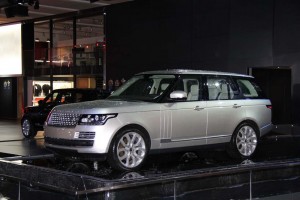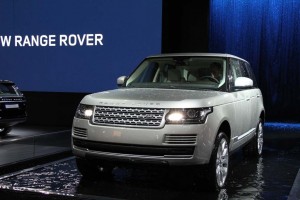The world is rapidly changing for automakers and nowhere is that more obvious than in the once-huge SUV segment. Sales peaked at more than 3 million in the U.S. a decade or so back and have been sliding ever since. Only a handful of models continue to exist in the classic, truck-based SUV segment. But don’t think utes are going away.
Certainly not the range-topping Range Rover which is making its formal public debut at this year’s Paris Motor Show. The flagship of the British Land Rover, the fourth-generation Range Rover nonetheless has adapted to rapidly changing market realities. Among other things, it’s nearly a half-ton lighter than the outgoing model and by next year buyers in many markets will be able to order one with an all-new plug-in hybrid drivetrain.
Nonetheless, Land Rover is eyeing big changes – especially in the wake of the successful launch of its Range Rover Evoque last year. The maker’s first crossover-based model is now its biggest seller, outperforming even the most optimistic expectations for the downsized CUV.

The new Range Rover goes all-aluminum - and will add a new plug-in hybrid drivetrain option next year.
That has Land Rover “looking at (future opportunities) in an analytical way,” suggested design chief Gerry McGovern. And, among other things, that could lead to even more crossovers in the coming years, as well as a product even smaller than the Evoque, he suggested.
“There is the ability to go smaller,” he hinted during a media roundtable at the Paris Motor Show. “How much smaller? We’ll have to wait and see.”
(For a closer look at the 2013 Range Rover, Click Here.)
One thing’s clear, under the new ownership of India’s Tata Motors – which bought Land Rover and sibling Jaguar from Ford Motor Co. several years ago – things have changed and doors have opened.
With the company now selling its products in 176 different countries, “We need a good mix of vehicles appropriate for different markets,” McGovern stressed.
The new Range Rover remains the flagship for Land Rover but it undergoes some major changes that could carry through to future products. Among other things, that includes an aluminum platform and body, the result of a huge investment in both Jaguar and Land Rover meant to help them improve fuel economy by reducing weight. The Sollyhull facility, which saw about $700 million invested, is now the largest automotive facility in the world focused on aluminum-based vehicles.
That investment, he said, underscored Tata’s commitment to Jaguar-Land Rover. McGovern also had kind words for the way the Indian parent has allowed its British subsidiary to spread its wings. “It’s been incredibly liberating” working with Tata after years under Ford, he said, adding that there has been a significant change in the corporate culture since then.
That has allowed for a lot more creativity at both of the British brands – which could lead to new products as innovative as the Evoque in the years ahead, McGovern promised.

